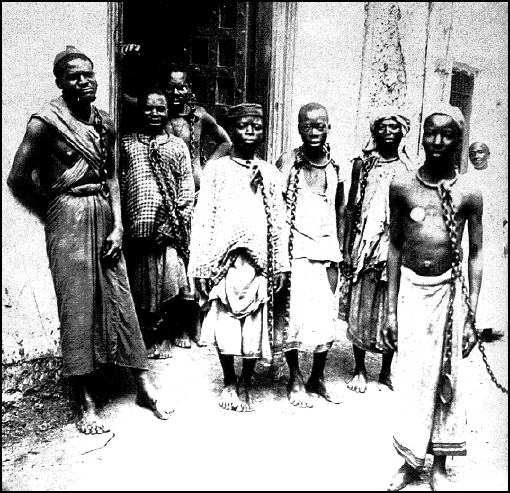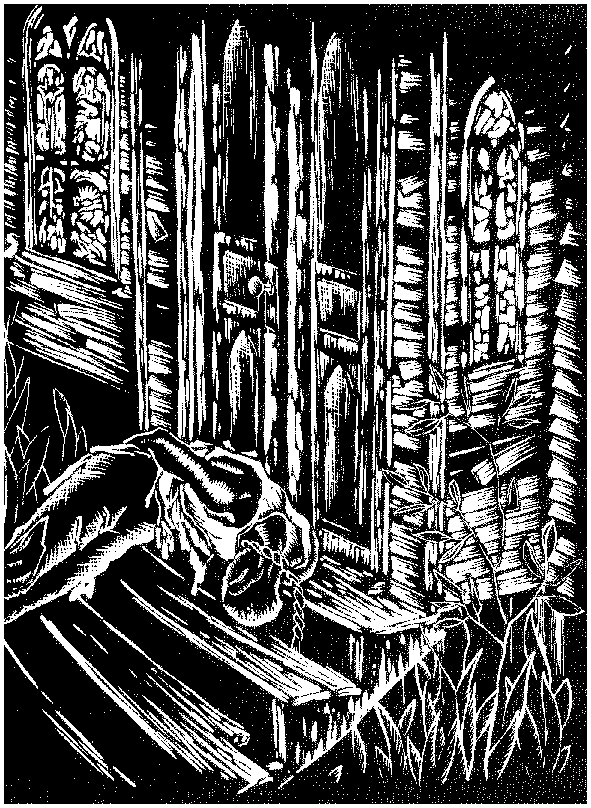The Politics of Slavery
In the National Capital
Paul Finkleman
Donald R. Kennon, Editors
(Ohio University Press)

Giddings got his first experience of the reality of the "peculiar institution" when he arrived in 1842 from Ohio. He recorded in his diary that in his first days on the streets of Washington you could hear the cries of slaves being abused. One slave he saw had been "pursued, knocked down & pounded ... until he appeared lifeless."
- The spectators, interfering, were told that he was the property of his master and that he had the right to kill him if he pleased. The master and his son then took him & dragged him through the street as they would have done a dead hog to a stable...
When, a few days later, he visited an auction at the "Pennsylvania Avenue Slave Stand," he saw a black man's reaction to his pending purchase: "As the bidders one after another raised the price of their fellowmen, his eyes followed them and the deep horror and agony of his soul was portrayed in the contortions of his countenance." Giddings told the members of the House,
- On a beautiful avenue in front of the capitol, members of Congress, during this session, have heard the harsh voice of the auctioneer, publicly selling human beings, while they were on their way to the capitol.
"They have also been compelled to turn aside from their path to permit a coffle of slaves, males and females, chained to each other by their necks, to pass on their way to this National slave mart."
After reading In the Shadow of Freedom, we started thinking it might be worthwhile to resume these anti-slavery debates on the floor of the Senate and House, since most workers in America are now earning what we used to call "slave wages." There is another advantage to opening the debate again: it was one of the finest free floor shows in the world when the congressional debates on slavery were being held during the thirty years that led up to the Civil War.
It wasn't just verbal back-and-forth, either, as Sumner could have attested. Rep. Giddings was once threatened with a cane by a Georgia House member, seized by the collar by Richard Meade of Virginia, and attacked by Lucius Lamar of Mississippi. In 1843, Charles Dawson of Louisiana "pushed Giddings from behind, threw him into the desks on the House floor, and reached for the bowie knife concealed beneath his coat."
What Giddings didn't get in pushings, shovings, and near beatings, he got in insults. Rep. Black invited him to Georgia, so "he would most certainly be subjected to the infliction of lynch law ... we would give him an elevation of which he little dreams." And one Waddy Thompson, a slaveholder from the deep south, delivered the most ferocious insults of them all. He told the House that Giddings was nothing but the very obscure of the obscure.
 In the Shadow of Freedom consists of ten essays on the venomous, violent nature of the proceedings of the American Congress in the decades leading up to the Civil War. All were debates over the legal and moral view of slavery and abolition. Shadow is also packed with information about slaveholding and the history of American slavery.
In the Shadow of Freedom consists of ten essays on the venomous, violent nature of the proceedings of the American Congress in the decades leading up to the Civil War. All were debates over the legal and moral view of slavery and abolition. Shadow is also packed with information about slaveholding and the history of American slavery.
- In the District of Columbia, during this period, there was an interesting mix of slaves and freedmen. The ratio was approximately one slave for every free black.
- The peak value for slaves were those between the ages of eighteen to twenty-one years. One could even borrow money, using slaves as collateral. Younger and older slaves were considered a drain on the treasury, which accelerated as they aged.
- Slave owners "routinely and systematically separated parents from their children ... separated even the youngest children from their mothers." The reason: children were considered an unnecessary distraction for a person who was expected to work, not be tending a baby.
- One slave told Harriet Beecher Stowe that she had reported to her husband, with their first child: "now our troubles begin, this child isn't ours." I never see a white man come onto this place that I didn't think, "There now, he's coming to look at my children."
- Dolley Madison, wife of James Madison, famous for her flag (and saving the portrait of Washington and a draft of the constitution during the war of 1812), was owner of several slaves. In fact, one of them tried to escape in 1848 on a boat named the Pearl bound for Philadelphia. The slave was captured and returned to Madison.
- Slaves were more valuable in the deep south than on the borderlands. After America's slave importation ban was implemented in 1808, the internal trade went into overdrive --- and in the succeeding five decades, almost 1,000,000 slaves were transported from the "Upper South" to the "Lower South."
- The reason the District of Columbia looks so cockeyed on the map is the result of something called "Retrocession." In 1791, Virginia and Maryland ceded "ten miles square" for the federal capitol. But later, Virginia demanded its part back. The government of Virginia was suspicious of Congress, feared that slavery some day be banned in the District, affecting, mostly, Alexandria which had a vigorous slave market. In 1846 the Retrocession was approved in Alexandria and duly accepted by Congress.
This section specifically refers to those who can vote --- "Free Persons" (male, white) --- and designates all "other people" as "three fifths of a person." By confirming this hoary 18th Century American tradition, we can be rid of many of our present-day nuisances (at least 2/5ths of them) that impede our God-driven course. Such as our sitting president, Michele Bachmann, Clarence Thomas and possibly even not a few Fundamentalist ministers. A time-tested way of enumerating women and minorities could be ours once again through reactivating the Three-Fifths Compromise.
We presume that such a motion would pass easily because the majority of congressmen, many candidates for higher office, and several Supreme Court Justices, make it clear that they see the American Constitution not only as perfect writ, but --- indeed --- divinely inspired.
With the Three Fifths Compromise back on track, we could not only solve the devilish problems of immigration, race, gambling on Indian reservations and the existence (even the birthplace) of our president, we can once again indulge in lively floor debates in the Senate and the House, which can include fisticuffs, bowie knives, and canes ... all ending with the ultimate insult: "you are the most obscure of the obscure."